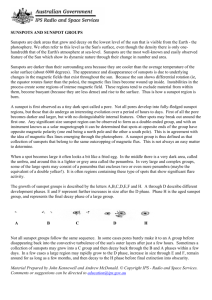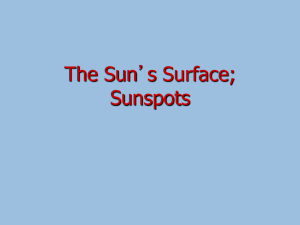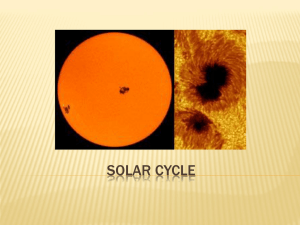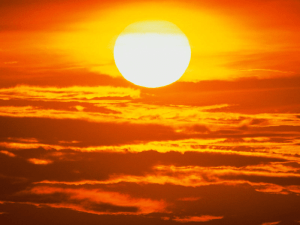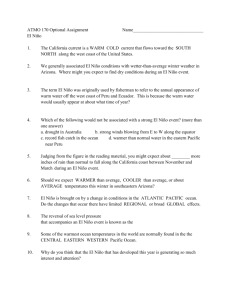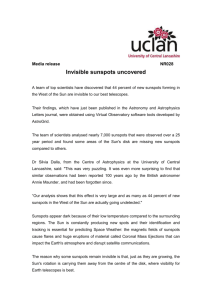Paleoclimate Module Lab 3: Climatic forcings
advertisement
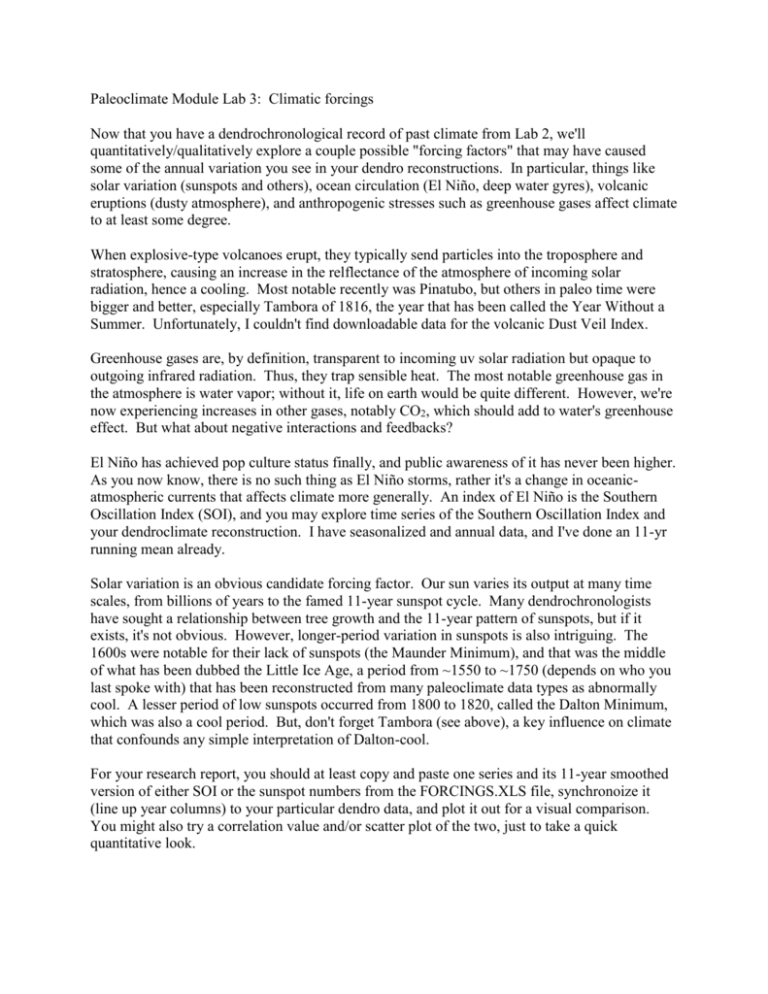
Paleoclimate Module Lab 3: Climatic forcings Now that you have a dendrochronological record of past climate from Lab 2, we'll quantitatively/qualitatively explore a couple possible "forcing factors" that may have caused some of the annual variation you see in your dendro reconstructions. In particular, things like solar variation (sunspots and others), ocean circulation (El Niño, deep water gyres), volcanic eruptions (dusty atmosphere), and anthropogenic stresses such as greenhouse gases affect climate to at least some degree. When explosive-type volcanoes erupt, they typically send particles into the troposphere and stratosphere, causing an increase in the relflectance of the atmosphere of incoming solar radiation, hence a cooling. Most notable recently was Pinatubo, but others in paleo time were bigger and better, especially Tambora of 1816, the year that has been called the Year Without a Summer. Unfortunately, I couldn't find downloadable data for the volcanic Dust Veil Index. Greenhouse gases are, by definition, transparent to incoming uv solar radiation but opaque to outgoing infrared radiation. Thus, they trap sensible heat. The most notable greenhouse gas in the atmosphere is water vapor; without it, life on earth would be quite different. However, we're now experiencing increases in other gases, notably CO2, which should add to water's greenhouse effect. But what about negative interactions and feedbacks? El Niño has achieved pop culture status finally, and public awareness of it has never been higher. As you now know, there is no such thing as El Niño storms, rather it's a change in oceanicatmospheric currents that affects climate more generally. An index of El Niño is the Southern Oscillation Index (SOI), and you may explore time series of the Southern Oscillation Index and your dendroclimate reconstruction. I have seasonalized and annual data, and I've done an 11-yr running mean already. Solar variation is an obvious candidate forcing factor. Our sun varies its output at many time scales, from billions of years to the famed 11-year sunspot cycle. Many dendrochronologists have sought a relationship between tree growth and the 11-year pattern of sunspots, but if it exists, it's not obvious. However, longer-period variation in sunspots is also intriguing. The 1600s were notable for their lack of sunspots (the Maunder Minimum), and that was the middle of what has been dubbed the Little Ice Age, a period from ~1550 to ~1750 (depends on who you last spoke with) that has been reconstructed from many paleoclimate data types as abnormally cool. A lesser period of low sunspots occurred from 1800 to 1820, called the Dalton Minimum, which was also a cool period. But, don't forget Tambora (see above), a key influence on climate that confounds any simple interpretation of Dalton-cool. For your research report, you should at least copy and paste one series and its 11-year smoothed version of either SOI or the sunspot numbers from the FORCINGS.XLS file, synchronoize it (line up year columns) to your particular dendro data, and plot it out for a visual comparison. You might also try a correlation value and/or scatter plot of the two, just to take a quick quantitative look.

